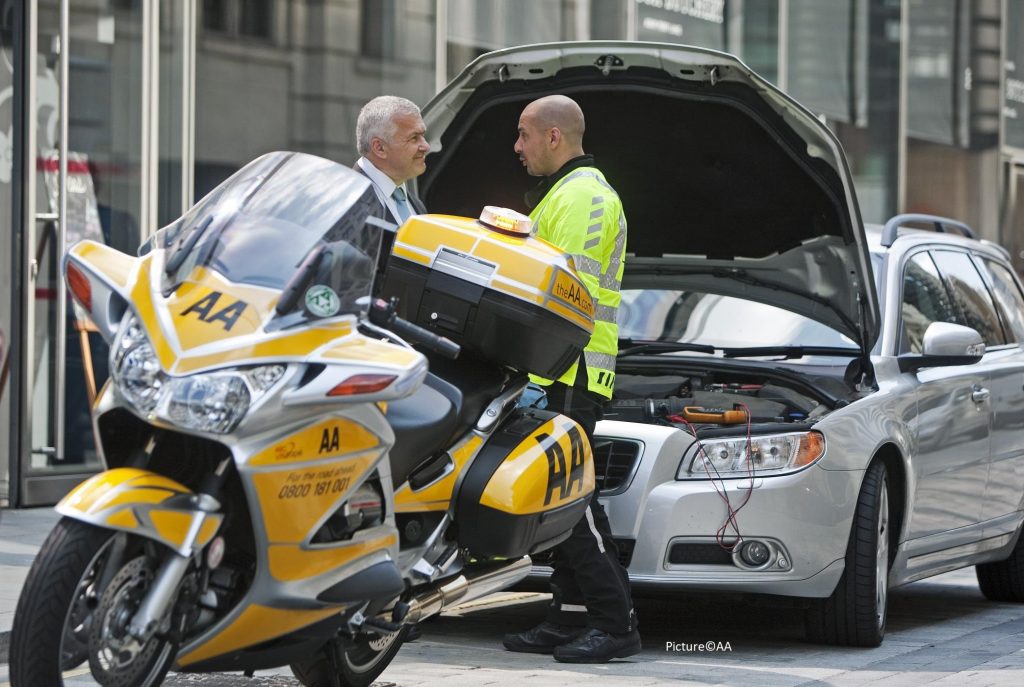Engines generate a lot of heat. Air is forced into the engine compartment through the vents at the front while you drive to stop things getting too hot. The car’s radiator fan is there as a back-up. It is designed to pull air into the engine when it determines there needs to be more cooling. But what happens if the car fan is running after the engine’s turned off?
Table of Contents
Why does the car fan in the engine bay come on after short trips?
When you stop driving no more cooling air is being forced into the engine bay. This prompts the temperature to rise. The car fan is automatically triggered when the temperature of the water gets to about 95 degrees Celsius. Once the temperature has dropped, the fan should cut out.
Modern engines are designed to heat up quickly. Even after a short trip, the car’s computer might decide it still needs air to cool excess heat once you stop driving.
How long will the fan stay on for?
IIt depends on how warm the car and ambient temperatures are. If the car’s been driven a long way on a hot day it could stay on for 10 to 20 minutes. It should not be on for hours at a time. If it is, ask a professional mechanic to diagnose the fault for you.
How does the car engine fan work?
The fan is located behind the radiator and designed to draw air through the radiator into the engine compartment to stop the engine overheating. This helps to keep the engine at the correct temperature. It is controlled by the temperature of the coolant.
When this reaches a certain point, sensors tell the car’s computer (ECU or engine control unit) which switches the fan on. The car fan is electrically powered by the car’s 12-volt battery. That’s why it can work when the engine isn’t running and the car is locked.
How does an engine cool itself?
An internal combustion engine features lots of moving parts that generate heat. If there was no cooling, parts would start melting and welding themselves together. To prevent this happening, the engine block is full of waterways. Coolant (water and anti-freeze) flows through these waterways, drawing heat out of them.
This coolant is then chilled by passing through the radiator where cool air, drawn in as you drive along, lowers the temperature further. The engine fan is effectively artificially re-creating the effect of cool air being forced into the radiator.
How do you know if the car fan isn’t working?
If the car’s fan packs up, your engine might overheat. You should know if this is happening because of the temperature gauge. If your car doesn’t have a temp gauge (not all the latest cars do), you should be able to find the engine temperature in the infotainment system somewhere.
There are also dashboard warning lights that tell you when the engine is getting too hot. If a red one appears, stop driving immediately. The yellow light probably means your coolant level is too low.

Why the fan is important
If an engine gets too hot it can damage itself. If your fan stops working you should ask a professional to investigate and fix it as quickly as possible.
Car fan faults
There are multiple things that can go wrong with an engine fan. It might blow the fuse that controls it. This is a relatively easy and cheap fix. Use your car’s user manual to tell you where the fuse is for the fan and what size replacement to buy.
More complicated is if the engine temperature sensor goes wrong, causing the fan to turn on too early, too late, or not at all. A technician will need to sort this out.
The fan is controlled by what’s known as a radiator fan relay. This is essentially a switch. Fan relays might stop the fan coming on or cut in and out. A mechanic will be able to tell you if this is the problem.
The fan is driven by an electric motor. This might wear out over time or simply break. If that happens, it’ll need replacing.
Low coolant levels might cause the car fan to run after driving
That the fan is running continuously might actually be nothing to do with the fan itself. It may be caused by leaking coolant. This will cause the engine to run hotter than it’s supposed to, with the fan coming on as a consequence.
Equally, a low coolant level might be causing the engine to run too hot which in turn might be triggering the fan.
It could even be the engine’s central computer malfunctioning and telling the fan to run when it doesn’t need to. That said, this is highly unlikely.
In a similar vein, your car might be suffering from electrical wiring trouble with a short circuiting wire triggering the fan into life. Again, we think this is unlikely but it might be an avenue for a professional technician to follow if it’s an intermittent problem.
Check your coolant
One of the easiest ways to ensure your car fan doesn’t break is to check your coolant. It’s very easy to do and will ensure that the engine is always running at the optimum temperature.
Simply open the bonnet and you’ll see a clear plastic tank. This has minimum and maximum markers on it. The fluid level inside the tank should be between the two.
Find out where the expansion tank is in your car’s user manual and read more about coolant and the sort your car probably needs in this blog.

I’ve been writing about cars and motoring for more than 25 years. My career started on a long-departed classic car weekly magazine called AutoClassic. I’ve since pitched up at Autosport, Auto Express, the News of the World, Sunday Times and most recently the Daily Telegraph. When I’m not writing about cars and motoring, I’m probably doing some kind of sport or working in my garden.







